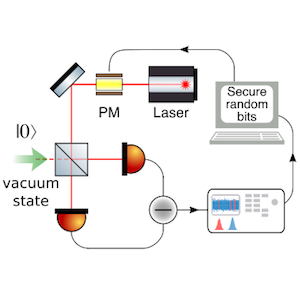New All-fiber autocompensating source for polarization QKD

Quantum key distribution (QKD) allows distant parties to exchange cryptographic keys with unconditional security by encoding information on the degrees of freedom of photons. Polarization encoding has been extensively used for QKD along free-space, optical fiber, and satellite links. However, the polarization encoders used in such implementations are unstable, expensive, and complex and can even exhibit side channels that undermine the security of the protocol. In our recently published manuscript (Agnesi et al. Opt. Lett 44(10) 2398 (2019); https://doi.org/10.1364/OL.44.002398) we propose and test a new polarization encoder: the POGNAC (for POlarization SaGNAC). The POGNAC combines a simple design and high stability reaching an low intrinsic quantum bit error rate. Since realization is possible from the 800 to the 1550 nm band using commercial off-the-shelf devices, our polarization modulator is a promising solution for free-space, fiber, and satellite-based QKD.









